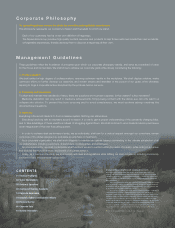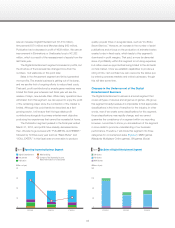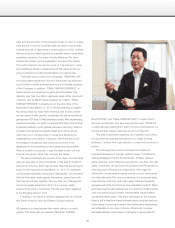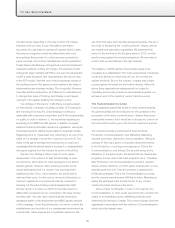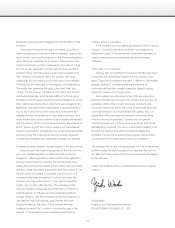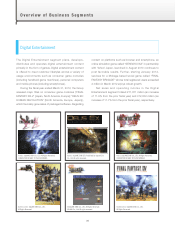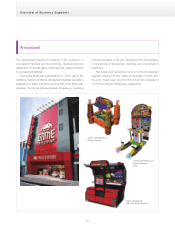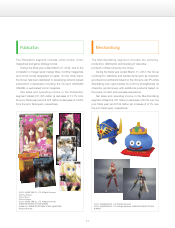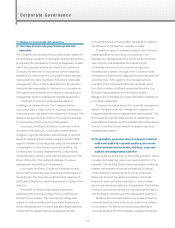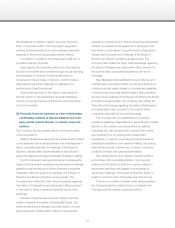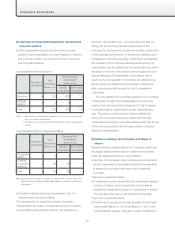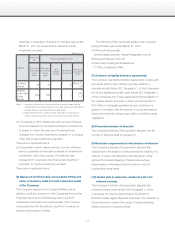Square Enix 2012 Annual Report Download - page 9
Download and view the complete annual report
Please find page 9 of the 2012 Square Enix annual report below. You can navigate through the pages in the report by either clicking on the pages listed below, or by using the keyword search tool below to find specific information within the annual report.
Networking and digitization triggered the first transition of this
structure.
The network became the media of content, and without
requiring a specialized device for media playback, users could
enjoy content, which led to a decline in the Commercialization’s
value. Moreover, because it is so easy to make copies in the
digital environment, content overflowed on the internet. Huge
amount of user-generated content such as blogs created a
situation where information and content were supplied more
than demand could absorb. Now the function that could
organize all this information and content grew to be valuable.
This new function belonged to the category of the Marketing.
The words that symbolize this era’s culture are “free” and
“share.” On the internet, the value of information and content
declined dramatically, and it became difficult for those doing
business on the Production and the Commercialization to survive.
Also, internet service providers, who had been engaged in the
Marketing, now had limited opportunities to generate revenue
due to self-invited free content issues and at the same time
engaged in fierce competitions to keep their customers. As a
result, the functions of the content industry became imbalanced,
and the industry faced a crisis of its ecosystem. We entered an
era of “search engine” this century where a “winner-takes-all”
situation was created. Interestingly, the content businesses that
survived during this time were those with vertical integration
models such as games and Japanese mobile phone services.
However, as Apple emerged, we saw change for the second time.
Every choice they made was opposite of the one from the
prior era. Vertical integration models rather than horizontal
integration, native applications rather than browser application,
premium rather than free. Perhaps the internet users were
feeling that while the then-existing environment was convenient
and free, it was disordered and unsafe, and they flocked to the
iPhone. Apple succeeded in complete customer lock-in. IT
companies that were struggling to find a solution saw this
success, and they switched over to the vertical integration
model, one company after another. The archetype of this
vertical integration model was the combination of iPhone, a
physical device, and iTunes, an online marketing platform.
Google, Amazon, and Microsoft announced their intention to
manufacture their own devices, and it seems that even
Facebook may join the party. At this moment the main
battlefield is tablet PCs. In order to become the ruler of the
internet, IT companies are now competing over physical
devices, which is a paradox.
For a company like ours that is specialized in the Production
function, it is good news since content is now shifting from
being free to paid. At the same time, it becomes necessary to
support many devices and development work becomes
inefficient.
Then, what is to come next?
I believe that two significant innovations, HTML5 and cloud
computing, will dramatically transform the ecosystem once
again. These two innovations will make it difficult to differentiate
devices, and the IT companies that are competing for
customers will lose their present weaponry. Apple’s vertical
integration model will no longer work.
Since games are interactive content that are enjoyed by
having consumers get involved in the virtual world, they are not
replicable. Unlike other content, the value is placed in the
consumer experience rather than code or data itself. Moreover,
online elements are now implemented into games, and our
relationship with customers has become continuous, rather
than one-time upon purchase. Currently the only people
standing between the customer and us are those that handle
the Marketing functions. The above-mentioned innovations will
be what will dissolve those that dominate the Marketing
functions. For the first time since the Company was founded,
we will be able to connect directly with our consumers.
The strategy that we are now executing is not only to secure the
profit for today, but also to prepare for a new era. We wish to
run after two hares; expanding the current business and leaping
for the next era.
Lastly, I would like to thank our shareholders for your ongoing
support.
Yoichi Wada
President and Representative Director
SQUARE ENIX HOLDINGS CO., LTD.
07


